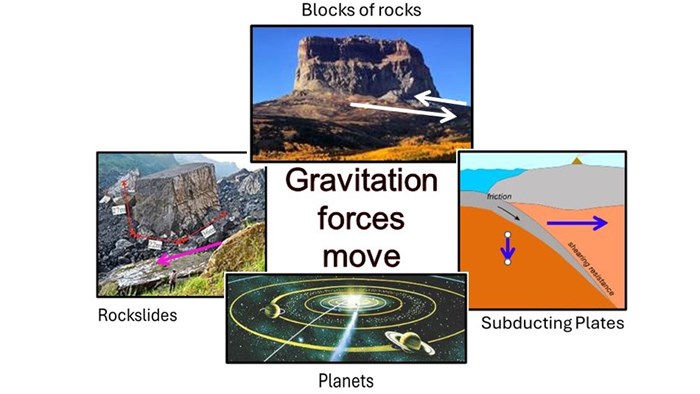
SEES Seminar: "How Gravitation and Heat Transfer Regulate Plate Tectonics and Earth's Thermal Evolution"

- Date and time
- 2:30 PM - 3:30 PM, April 12, 2024
- Description
Near-surface motions of Earth's plate are made possible by the cold, brittle lithosphere being underlain by a weak low-velocity zone (LVZ). The thermal states of both layers result from the leakage of Earth's internal radiogenic heat to space. But to move the plates laterally requires lateral forces. We propose that force imbalances arising in the unique 3-body-Earth-Moon-Sun system are the main cause of complexity in these large-scale, cooperative tectonic motions. Comparing rocky planets shows that the presence and longevity of volcanism and tectonism depend on the particular combination of moon size, moon orbital orientation, proximity to the Sun, and rates of body spin and cooling. Earth is the only rocky planet with all the factors needed for plate tectonics. She will explain that because the lunar orbit is becoming more elliptical, rather than growing, plate tectonics is ancient.
Dr. Anne M. Hofmeister obtained her BS with highest honors in Physics and Literature - Harvey Mudd College, MS in Physics - University of Illinois, PhD in Geology - Caltech. She has experience with spectroscipic measurements of minerals, was a postdoctoral associate and fellow at the Geophysical Laboratory performing high-pressure measurements under the supervision of Ho-Kwang Mao. She was an assistant professor and associate professor at U.C. Davis, including a David and Lucille Packard Fellowship. She also completed a brief sabbatical as a Humbolt Fellow at the Max Planck Institute in Mainz, Germany, where she studied with Reinhard Boehler.
Currently, she conducts research in several areas at the Earth and Planetary Science Department at Washington University in St. Louis. Her research includes: Optical and infrared spectroscopy with collaborative application to astronomy to better understand the mechanism of heat transfer; Measurement and modelling of heat transport and thermodynamic properties, with application to geophysics and planetary sceince; Newtonian gravitational theory; and Dilatometry studies of rocks. She is best known for inferring macroscopic properties of solids from microscopy measurements of spectra. She publishes in the areas of astronomy, geoscience, material science, medicine, physics and planetary science. She has served as the editor for American Mineralogist and as a councillor for the Mineralogical Society of America.
- Event sponsor
- Earth, Environment and Sustainability, School of
- Admission
Free
- Open to public, alumni, current students, faculty, future students
- Location
Additional information
- Event contact
- Tracy Carroll
- Academic Administrative Assistant II
- TracyCarroll@MissouriState.edu
- 417-836-5800
- Visit website
